The AMD Radeon R9 270X & R9 270 Review: Feat. Asus & HIS
by Ryan Smith on November 13, 2013 12:01 AM ESTMeet The HIS Radeon R9 270 IceQ X2 & Asus Radeon R9 270 DirectCU II OC
Unlike the 270X the 270 won’t have a reference design card, with every partner releasing their own custom design right off the bat. To that end we’ll be looking at a pair of retail 270 cards today, one from HIS and another from Asus. Our first card will be the HIS card, which as a reference clocked card will be our stand-in for the reference 270.
| Radeon R9 270 Mini-Comparison | ||||
| HIS Radeon R9 270 IceQ X2 | Asus Radeon R9 270 DirectCU II OC | |||
| Core Clock | 900MHz | 950MHz | ||
| Boost Clock | 925MHz | 975MHz | ||
| Memory Clock | 5.6GHz GDDR5 | 5.6GHz GDDR5 | ||
| VRAM | 2GB | 2GB | ||
| Width | Double Slot | Double Slot | ||
| Length | 8.3" | 9" | ||
| Price | $179 | $179 | ||
HIS Radeon R9 IceQ X2
HIS’s 270 IceQ X2 is a typical design for the retail 270 cards we have seen thus far. Most cards will feature a dual fan open air cooler over a moderately sized heatsink, and that’s exactly what we’re looking at with HIS’s card.
For their 270 HIS is using the smaller version of their IceQ X2 heatsink and fan unit. The smaller IceQ X2 utilizes a pair of fans mounted over an aluminum heatsink, with a trio of copper heatpipes providing a connection between the heatsink and the Pitcairn GPU underneath. There aren’t any baseplates or secondary heatsinks here, so cooling for the discrete electrical components and the RAM chips is provided solely via airflow coming off of the card’s fans.
With a PCB of 8” long and a combined card length of 8.3” long, the 270 IceQ X2 is the shorter of the two cards we’re looking at today. Though with the only points of contact between the cooler and the PCB being around the GPU, the card is still just long enough that we would have liked to see a stiffener or some other reinforcement mechanism on the PCB to keep the far end of the PCB from moving freely of the cooler.
As a 270 card one of the defining features will be the card’s power requirements, which at 150W means it needs only one PCIe power socket. For the IceQ X2 this is located at the far end of the PCB, orientated parallel to the PCB itself; so you’ll need a bit more room behind the card to work in the necessary power cabling.
Otherwise at the front end of the card we find a full slot vent, coupled with AMD’s last-generation I/O layout of 2x Mini DisplayPort, 1x HDMI, and 1x DL-DVI. This gives the 270 IceQ X2 more flexibility overall, but it means it won’t be able to natively drive a pair of DL-DVI monitors. This design also means that this is likely a reuse of an earlier HIS board, though we haven’t been able to identify the specific one.
Asus Radeon R9 270 DirectCU II OC
Our second 270 for the day is Asus’s Radeon R 270 DirectCU II OC. This is a factory overclocked model, which is something several of AMD’s partners will be doing as part of their usual differentiation and value add strategies.
Like the HIS 270, Asus’s card is a dual fan open air design. Based on a smaller version of their DirectCU II cooler, Asus utilizes a pair of heatpipes running from the Pitcairn GPU to the card’s heatsink, which overruns the PCB itself just slightly. There aren’t any baseplates or secondary heatsinks here, so cooling for the discrete electrical components and the RAM chips is provided solely via airflow coming off of the card’s fans.
The total length of the Asus 270 is 9”, of which roughly half an inch is the cooler overhanging the PCB. Despite the longer PCB Asus isn’t using any kind of stiffener or other PCB reinforcement here either, so even more so than the HIS card, Asus could use a little more protection against PCB bending.
For Asus’s power connectivity, the single 6-pin PCIe power socket is found at the end of the card, orientated perpendicular to the PCB. This is the second Asus card where we’ve seen Asus reverse the PCIe power socket so that the tab on the plug faces inwards instead of outwards, which makes it easier to plug (and unplug) the card without having to deal with the cooler blocking the tab. At the same time since the Asus card is a bit longer than the HIS card, we’re glad to see they’re using a perpendicular orientation to best minimize the need for additional room for the power cable.
As for Asus’s display I/O, Asus is using the current generation AMD standard of 2x DL-DVI 1x HDMI, and 1x DisplayPort. This gives the Asus card the ability to drive two DL-DVI type displays at once, but it only leaves 1 DisplayPort for any flexible expansion.
Finally, on the software side of things the 270 comes with Asus’s standard GPUTweak software utility. GPUTweak is a very competent overclocking suite that offers all of the overclocking and monitoring functionality we’ve come to expect from a good overclocking utility, including a wide array of monitoring options and support for GPU voltage control. Asus’s taste in skins is unfortunate – a low contrast red on black – but otherwise the UI itself is similarly solid. To that end GPU Tweak won’t match Afterburner on some of its more fringe features such as recording and overlays, but as a pure overclocking utility it stands up rather nicely.


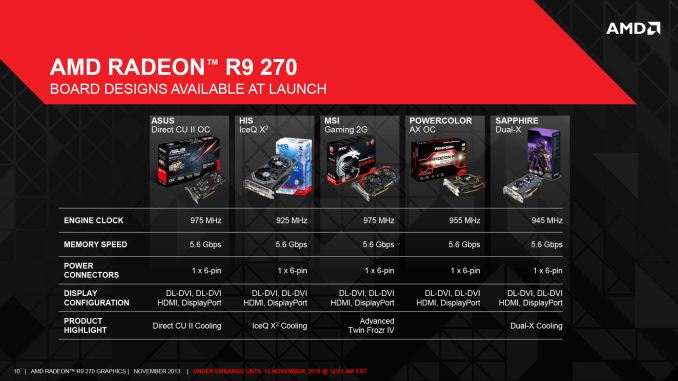
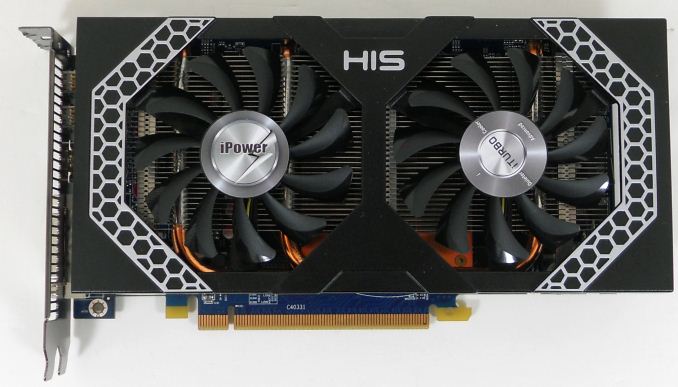
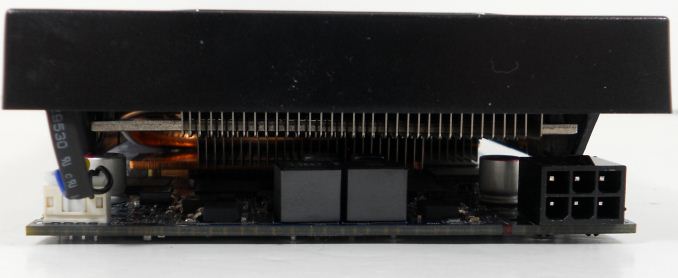
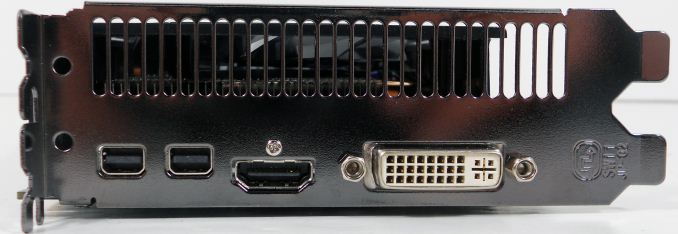


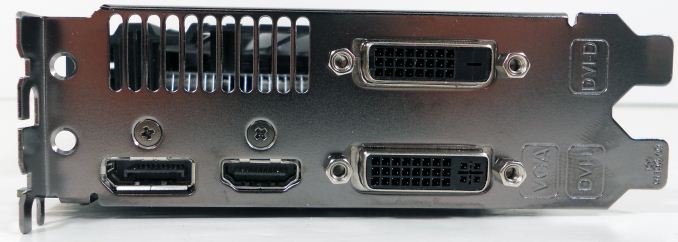
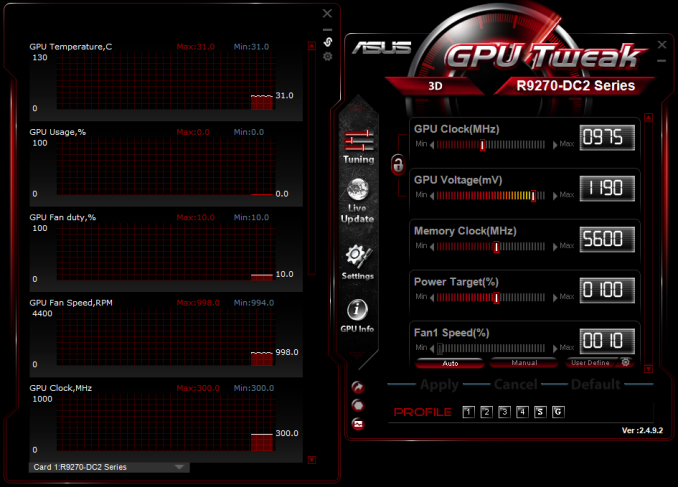








59 Comments
View All Comments
Quidam67 - Wednesday, November 13, 2013 - link
you make a valid point in some respects, but keep in mind for some people (including me) that is a different class of card, in terms of it's power requirements and the physical form factor. At this level of card, I'm looking for a small card and preferably a single 6 pin power adapter. I'm working with a small sized rig here that can still offer solid 1080p gaming.jnad32 - Thursday, November 14, 2013 - link
What he said, and there are going to be hard as hell to find here very soon.dwade123 - Thursday, November 14, 2013 - link
It's struggling with current-gen games, and will become obsolete with next-gen console ports.creed3020 - Thursday, November 14, 2013 - link
"Finally for our look at noise, the results are fairly typical for every card except the Asus. Asus’s 270 by comparison to everything else now holds the new record for quietest card on our current testbed, coming in at just 36C"@ Ryan: I believe you meant to say 36 dB
Ryan Smith - Thursday, November 14, 2013 - link
Indeed I did. Thank you.Hrel - Thursday, November 14, 2013 - link
I don't under the 270X. Isn't that just an overclocked 270? Overclocking your GPU isn't hard, at all. Why would anyone pay extra for an overclock? Also, since when do GPU manufacturers release overclocked cards as if they're different cards?I'd like to see an overclocking comparison between the GTX660 and the 270. Find the highest stable OC on both then compare them.
I just really don't see the point of the 270X.
Da W - Friday, November 15, 2013 - link
It got an extra 6 pin connector.Tujan - Saturday, November 16, 2013 - link
Is there going to be any advantages to using 8.1 Windows over Windows 7 where the newer cards advances are concerned ? That is will any of the advatages implemented to the new AMD cards 'not' be an advatage to Windows 7 users ?hapkiman - Monday, November 18, 2013 - link
"it shipped at lower clockspeeds then 7870," "Then" should be written as "than," and a "the" is necessary. e.g.:"it shipped at lower clockspeeds than the 7870,"
P39Airacobra - Sunday, May 11, 2014 - link
I bought a HIS Radeon R9 270 IceQ X2, I originally was going to get the MSI gaming model, But right before I got the money Newegg raised it from $179 to $189, So I instead got the HIS for $179. (10 bucks is 10 bucks man!) And I am very happy with the HIS 270 it performs very very well. Best fastest GPU I ever owned. And it will match the 270x just by simply going into AMD overdrive and moving the clock from 925 to 1050. It is a amazing card, I highly recommend it.